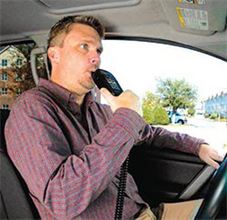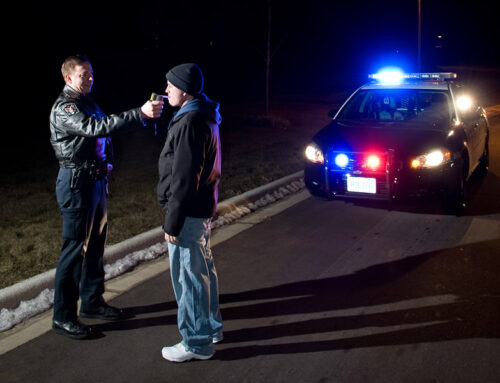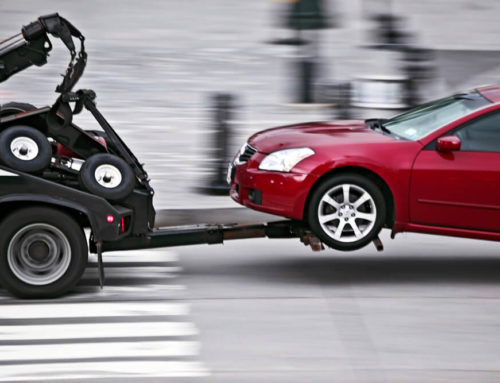USA Today reports that the Insurance Institute for Highway Safety (IIHS) supports national legislation requiring all first-time DWI offenders to install an ignition interlock device in their vehicles.
An ignition interlock device is a hand-held unit, which requires a driver to blow into the device before starting the vehicle and at random intervals while driving the vehicle. If the driver’s alcohol concentration is 0.02 or more, the vehicle will not start. In Minnesota, drivers who install an ignition interlock device have to pay approximately $100 per month for the device, plus a $100 installation fee and a $50 removal fee. In addition, drivers must have their vehicle inspected once per month or once every two months if a more expensive device is installed.
The IIHS reports that its study shows that an across-the-board ignition interlock mandate reduce recidivism by 11-12%. Notably, the study doesn’t mention that most states require an ignition interlock device for only 6 to 12 months in the typical first-time offense. However, legislators and public interest groups are concerned about recidivism far beyond 6 to 12 months. Reducing recidivism by 11-12% in the very short run seems to overstate the effectiveness of ignition interlock laws for first-time offenders.
Currently, 15 states have laws requiring an ignition interlock device for first-time offenders, and 7 states are considering passing such laws. Minnesota is not one of them but does require certain first-time offenders with alcohol concentrations of 0.16 or more to use an ignition interlock device for one year or go one year without driving privileges. However, first-time DWI offenders in Minnesota with alcohol concentrations of 0.16 to 0.19 can avoid use of an ignition interlock device by pleading guilty to misdemeanor DWI, whereby the total revocation period is reduced to 30 days, assuming the driver is at least 21 years old.
The article contains an interactive map listing ignition interlock laws across all states. Out-of-state residents who are convicted of DWI in Minnesota often are required to use an ignition interlock device in their home state because Minnesota reports the DWI conviction to the driver’s home state, and the home state generally treats the offense as if it happened in the home state. Thus, an Illinois resident who is convicted of DWI in Minnesota usually is required to use an ignition interlock device for the period of time applicable to any similar offense occurring in Illinois.
Not surprisingly, this across-the-board legislation is supported by Mothers Against Drunk Driving, which supports legislation in Congress to provide federal outlays to states who adopt such legislation.
The American Beverage Institute is critical of the IIHS study, citing its short-run effect on recidivism.
Interestingly, the American Probation and Parole Association finds an ignition interlock mandate for all first-time DWI offenders an “unnecessary and costly response,” which reportedly would cost states approximately $432 million to supervise first-time offenders. Perhaps, we should listen to probation officers who actually supervise DWI offenders rather than special interest groups.
Research in Minnesota generally shows that 70 to 80% of first-time DWI offenders never re-offend. Requiring everyone to install an ignition interlock device for one year seems like overkill and certainly would be a costly prescription affecting the liberties of people who made a one-time mistake.
History reveals that draconian DWI legislation is politically expedient for politicians on both sides of the aisle. Very few legislators have the political will to oppose increasingly Orwellian DWI laws. The reality is that ignition interlock laws disproportionately affect low-income people who cannot afford to pay a $100 or more per month for the device. As reported previously, Minnesota DWI arrests have decreased significantly over the past several years. The decline in arrests occurred prior to the state’s ignition interlock mandates effective July 1, 2011. We aren’t far away from special interest groups recommending ignition interlock devices in all vehicles on the road. MADD does not go that far but does support the advancement of ignition interlock technology whereby the “technology [is] so reliable, accurate and inexpensive that it would cost owners less to have it on cars because of the insurance break – just like air bags.”
One oddity is that Minnesota’s ignition interlock laws prevent operation of a vehicle at an alcohol concentrations of 0.02 or more, yet only alcohol concentrations of 0.04 or more are relevant evidence of driving a vehicle while impaired by alcohol under Minnesota Statutes. Consumption of one drink can trigger an alcohol concentration of 0.02 or more. The legal limit in Minnesota is 0.08. I think most Minnesotans would agree that a 0.02 standard is unreasonable low and arbitrary.





Leave A Comment